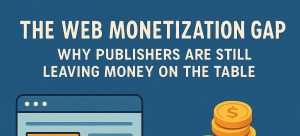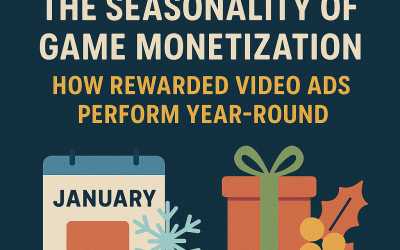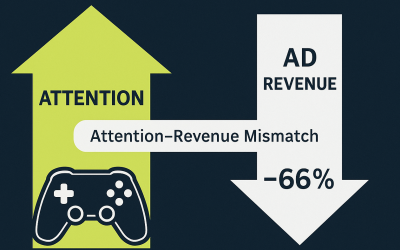The Web Monetization Gap: Why Publishers Are Still Leaving Money on the Table
In the rapidly evolving digital landscape, publishers face an increasingly complex challenge: maximizing revenue while maintaining audience trust and engagement. Despite having access to more monetization tools and strategies than ever before, many publishers continue to leave significant revenue on the table. This monetization gap represents billions of dollars in unrealized potential across the industry, and understanding why it persists is crucial for any publisher looking to optimize their revenue streams.
Contents
Understanding the Modern Monetization Landscape
The digital publishing ecosystem has transformed dramatically over the past decade. Traditional banner ads, once the primary revenue source, now compete with programmatic advertising, native content, subscription models, affiliate marketing, and emerging technologies like micropayments and NFTs. This abundance of options, while offering unprecedented opportunities, has also created decision paralysis and strategic confusion among publishers.
The modern publisher operates in an environment where reader behavior is constantly shifting. Users employ ad blockers at increasing rates, demand faster page load times, and expect personalized experiences while simultaneously becoming more privacy-conscious. This creates a delicate balance between monetization and user experience that many publishers struggle to achieve.
Moreover, the rise of social media platforms and search engines as content distributors has fundamentally altered how audiences discover and consume content. Publishers must now optimize not just for direct traffic monetization but also for revenue generation across multiple channels and platforms, each with its own set of rules and limitations.
The Anatomy of Revenue Leakage
Underutilized Ad Inventory
One of the most significant areas where publishers lose money is through suboptimal ad inventory management. Many publishers fail to maximize their available ad space, either by not implementing header bidding properly, missing opportunities for strategic ad placement, or failing to optimize their ad refresh rates. Studies suggest that publishers using advanced programmatic techniques can increase their ad revenue by 20-50% compared to those relying solely on traditional ad networks.
The complexity of programmatic advertising has led many smaller publishers to rely on simplified solutions that, while easier to implement, often result in lower yields. Additionally, many publishers don’t regularly audit their ad performance or experiment with different ad formats, missing opportunities to optimize revenue per visitor.
Incomplete Audience Monetization
Publishers often fail to monetize their entire audience effectively. This includes overlooking international visitors, mobile users, or specific demographic segments that might respond better to alternative monetization strategies. For instance, younger audiences might be more receptive to sponsored content or affiliate marketing, while professional audiences might be willing to pay for premium content or specialized newsletters.
Many publishers also struggle with seasonal traffic spikes, failing to capitalize on periods of increased engagement with appropriate monetization strategies. Holiday seasons, breaking news events, or viral content can drive significant traffic that goes undermonetized due to lack of preparation or flexible monetization systems.
Subscription and Membership Underutilization
While subscription models have gained popularity, many publishers implement them poorly or too late in their growth trajectory. The key to successful subscription monetization lies in understanding what value readers are willing to pay for and at what price points. Publishers often either undervalue their content, leading to low subscription prices, or overestimate their value proposition, resulting in low conversion rates.
The freemium model, when executed correctly, can significantly boost overall revenue by converting a small percentage of free users to paid subscribers while maintaining ad revenue from the larger free audience. However, many publishers struggle with finding the right balance of free versus premium content, often giving away too much value for free or restricting too much content behind paywalls.
Technology and Implementation Barriers
Legacy Systems and Technical Debt
Many publishers operate on outdated content management systems and advertising technologies that limit their ability to implement modern monetization strategies. Legacy systems often can’t support advanced features like dynamic paywalls, sophisticated user segmentation, or real-time bid optimization. Upgrading these systems requires significant investment and technical expertise that many smaller publishers lack.
The integration of multiple monetization platforms also creates technical challenges. Publishers might use separate systems for display advertising, affiliate marketing, subscription management, and email marketing, leading to data silos and missed opportunities for cross-platform optimization.
 Data Collection and Analysis Limitations
Data Collection and Analysis Limitations
Effective monetization requires deep understanding of audience behavior, preferences, and value. However, many publishers lack the tools or expertise to collect, analyze, and act on this data effectively. Without proper analytics, publishers can’t identify which content drives the highest value audiences, which traffic sources are most profitable, or how different monetization strategies perform across various user segments.
Privacy regulations like GDPR and CCPA have further complicated data collection, making it harder for publishers to build detailed user profiles necessary for targeted monetization strategies. Publishers who haven’t adapted to cookieless tracking and first-party data strategies often see declining ad revenues and reduced ability to personalize user experiences.
Strategic Misalignment and Short-Term Thinking
Lack of Diversification Strategy
Many publishers remain overly dependent on a single revenue stream, typically display advertising. This over-reliance creates vulnerability to market changes, algorithm updates, or shifts in advertiser spending. Publishers who don’t diversify their revenue streams miss opportunities to create more stable, predictable income while also potentially earning more from their existing audience.
The most successful publishers typically employ a portfolio approach, combining multiple revenue streams that complement rather than cannibalize each other. This might include display ads for casual visitors, subscription options for engaged readers, affiliate marketing for product-focused content, and sponsored content for brand partnerships.
Short-Term Revenue Focus
The pressure to generate immediate revenue often leads publishers to make decisions that optimize for short-term gains at the expense of long-term reader relationships and revenue potential. This includes over-advertising, aggressive popup implementations, or pushing too hard for immediate subscriptions without building sufficient trust and value.
Publishers who focus on building long-term reader relationships through quality content, excellent user experience, and gradual value demonstration often see higher lifetime value per reader, even if their immediate monetization metrics appear lower.
The Path Forward: Closing the Monetization Gap
Implementing a Holistic Revenue Strategy
Successful revenue optimization requires a comprehensive approach that considers all potential revenue streams and how they interact with each other. This means developing reader personas, understanding the customer journey, and implementing appropriate monetization strategies for each stage of that journey.
Publishers should start by conducting a thorough audit of their current monetization performance, identifying underperforming areas and missed opportunities. This includes analyzing traffic patterns, user behavior, conversion rates, and revenue per visitor across different segments and time periods.
Investing in Technology and Expertise
Closing the monetization gap often requires investment in better technology and specialized expertise. This might mean upgrading to modern content management systems, implementing advanced analytics platforms, or hiring specialists in areas like programmatic advertising, subscription optimization, or email marketing.
For smaller publishers, this might involve partnering with specialized service providers or joining publisher networks that can provide access to advanced tools and expertise that would be prohibitively expensive to develop in-house.
Building Reader-Centric Value Propositions
The most sustainable monetization strategies are built around genuine value creation for readers. This means understanding what your audience values most and developing monetization approaches that enhance rather than detract from their experience with your content.
This might involve creating premium content tiers, developing exclusive community features, offering practical tools or resources, or providing early access to information. The key is ensuring that monetization feels like a natural extension of the value you already provide rather than an interruption or barrier to it.
Measuring Success and Continuous Optimization
Closing the monetization gap is not a one-time effort but an ongoing process of testing, measuring, and optimizing. Publishers should establish clear metrics for success that go beyond simple revenue numbers to include reader satisfaction, engagement levels, and long-term value creation.
Regular testing of different approaches, from ad placement and formats to pricing strategies and content offerings, helps publishers understand what works best for their specific audience and niche. This data-driven approach to monetization ensures that strategies remain effective as markets and audience preferences evolve.
AppLixir Monetization Summary
The web monetization gap represents both a significant challenge and tremendous opportunity for publishers. While the complexity of the modern digital ecosystem has created numerous ways for revenue to leak through the cracks, publishers who take a strategic, technology-enabled, and reader-focused approach to monetization can significantly outperform their peers.
Success in closing this gap requires publishers to move beyond traditional thinking about web monetization, embrace new technologies and strategies, and maintain a long-term focus on building valuable relationships with their audiences. Those who make these investments and strategic shifts will find themselves not just closing the monetization gap but establishing sustainable competitive advantages in an increasingly crowded digital landscape.
The publishers who thrive in the coming years will be those who view monetization not as something imposed on their content but as an integral part of their value proposition to readers. By aligning monetization strategies with reader interests and investing in the technology and expertise needed to execute them effectively, publishers can transform the monetization gap from a persistent problem into a significant competitive advantage.




